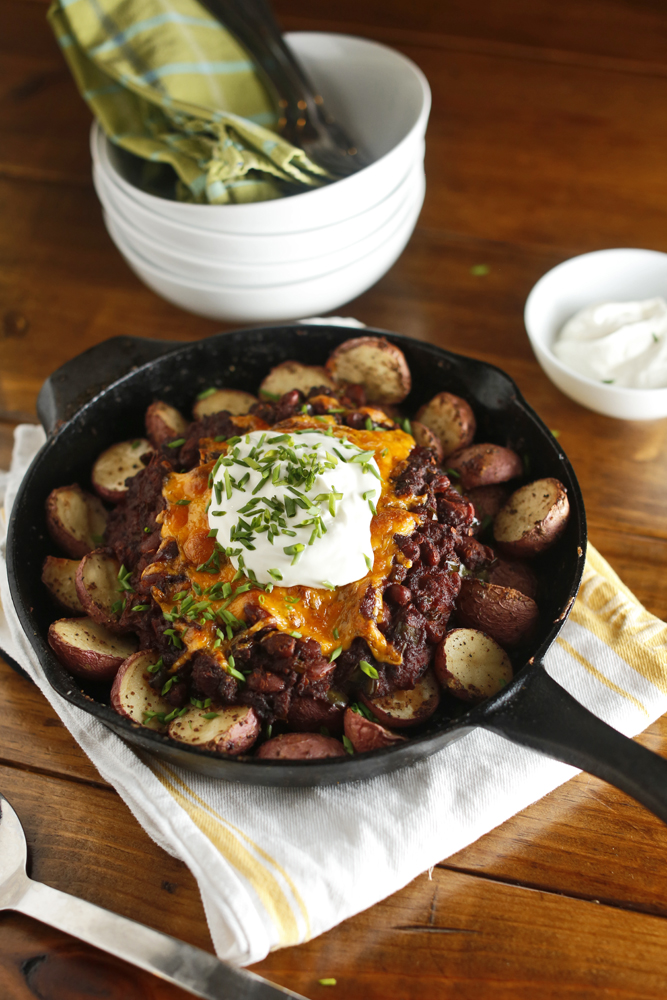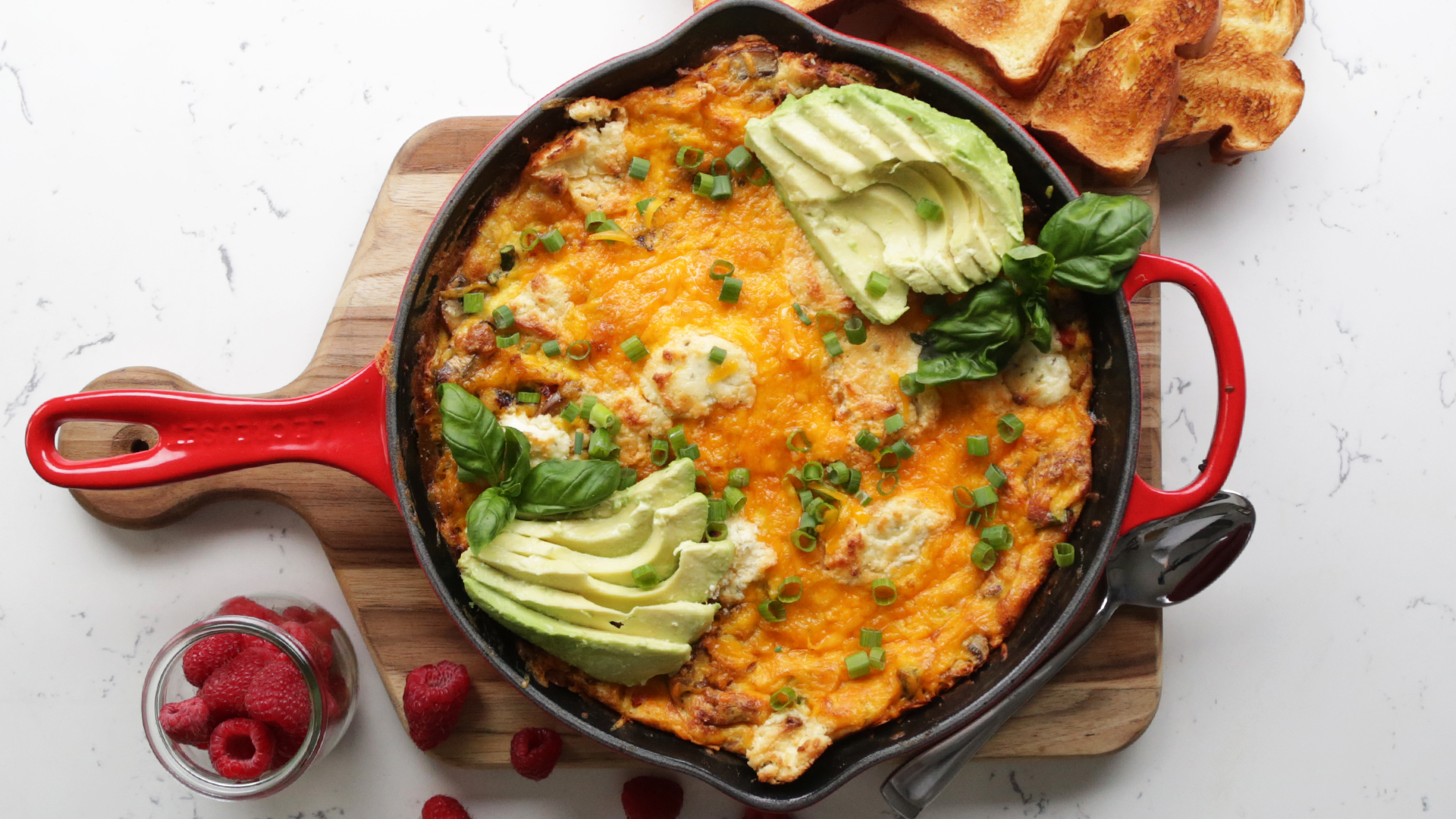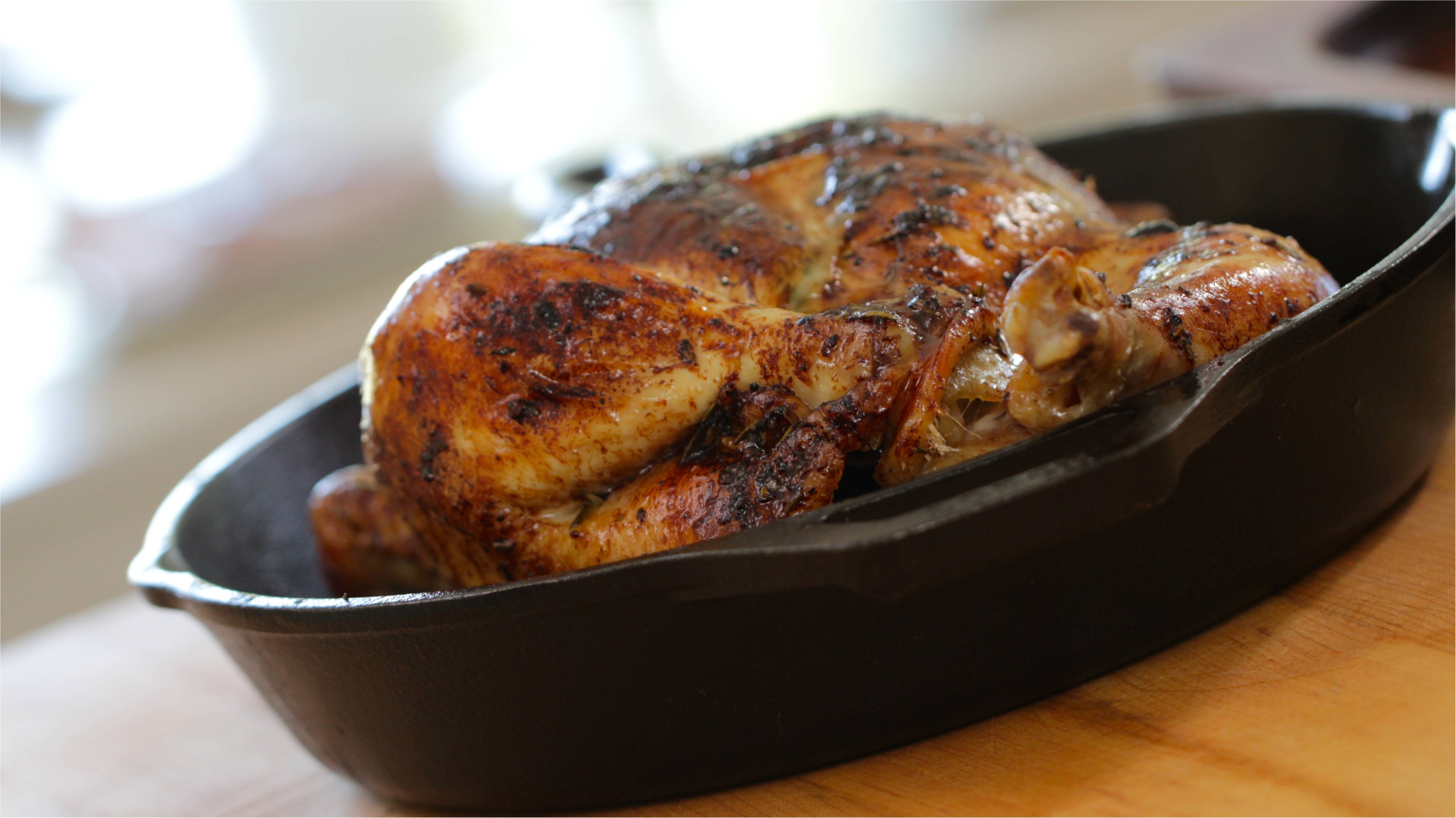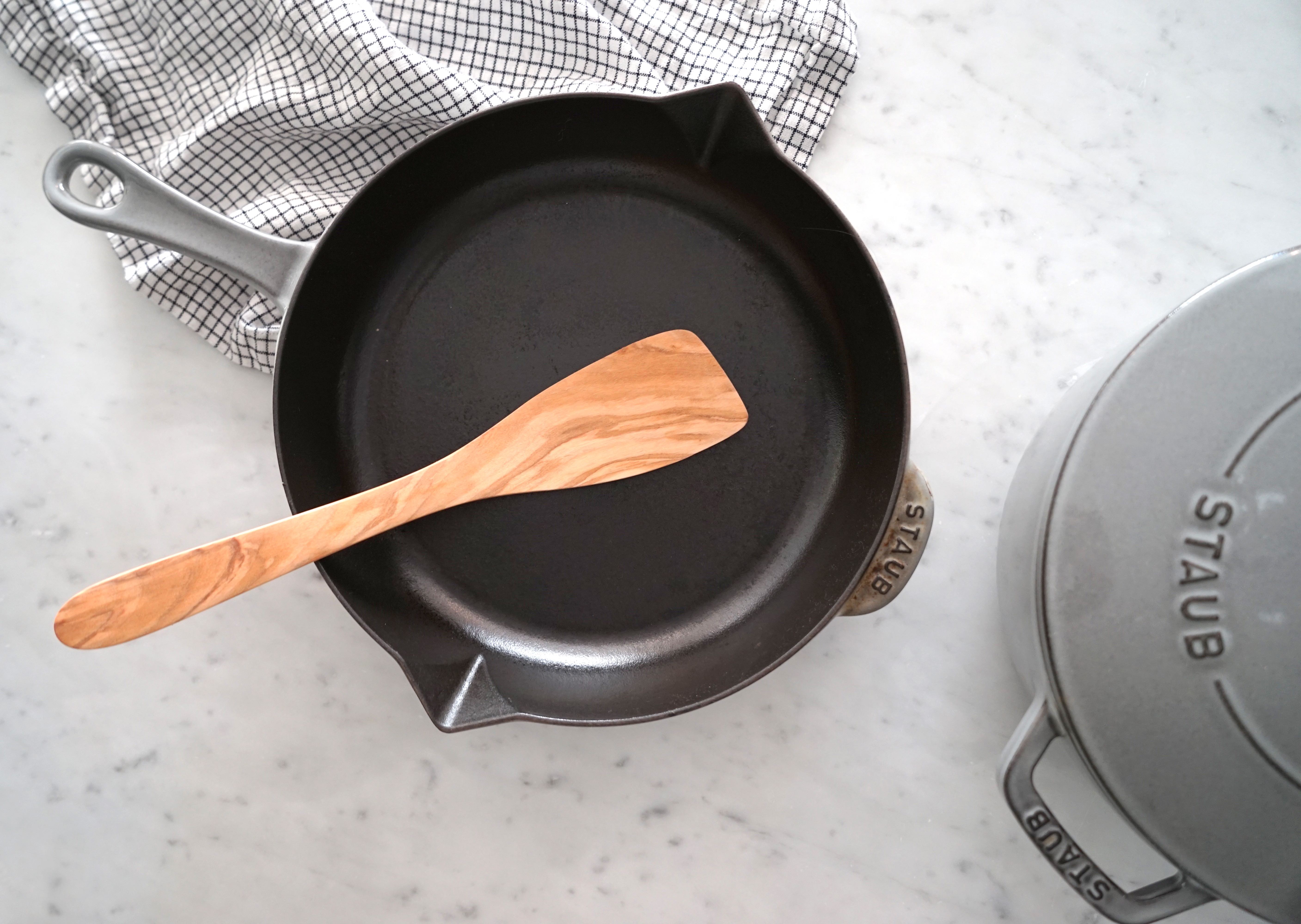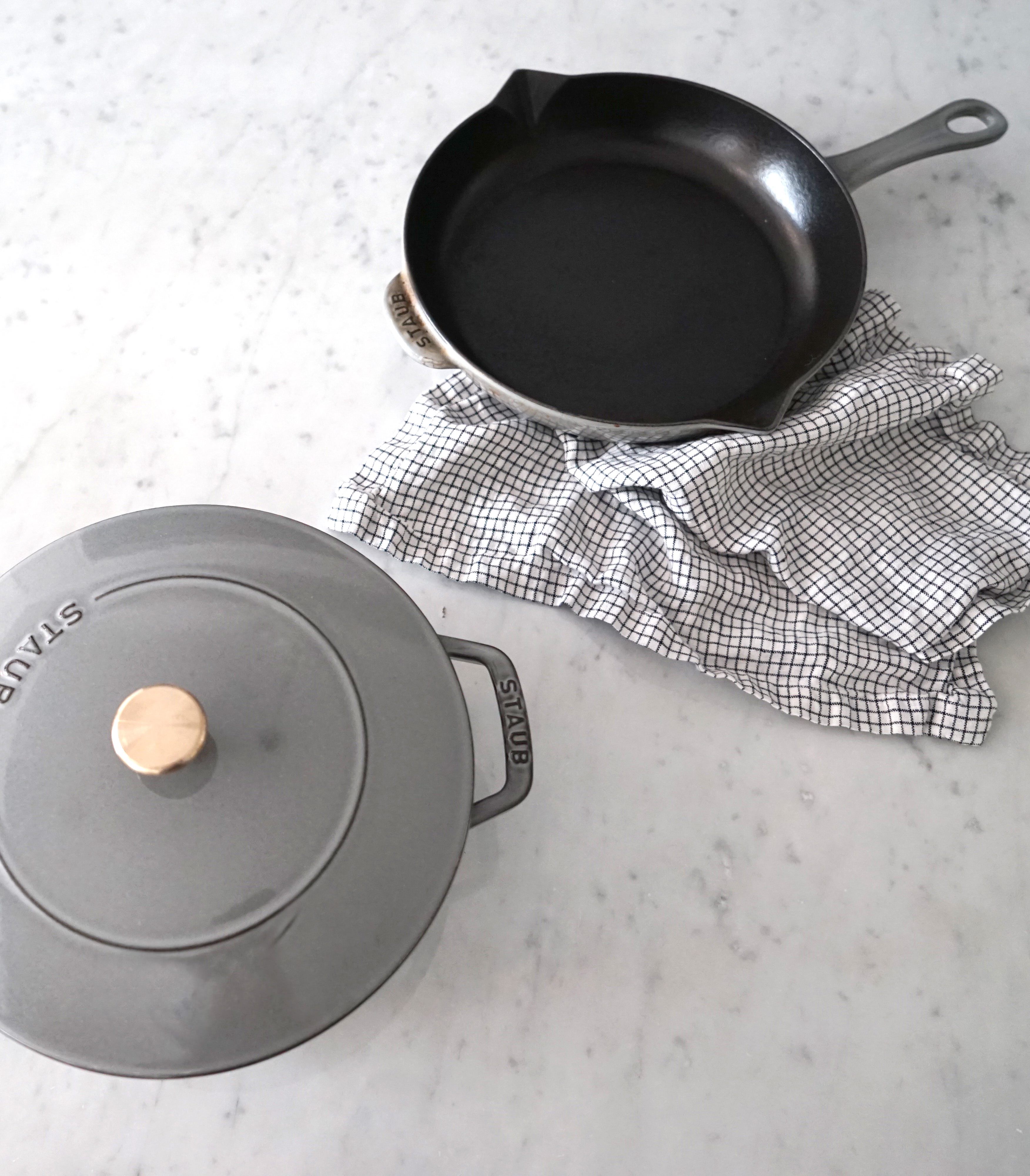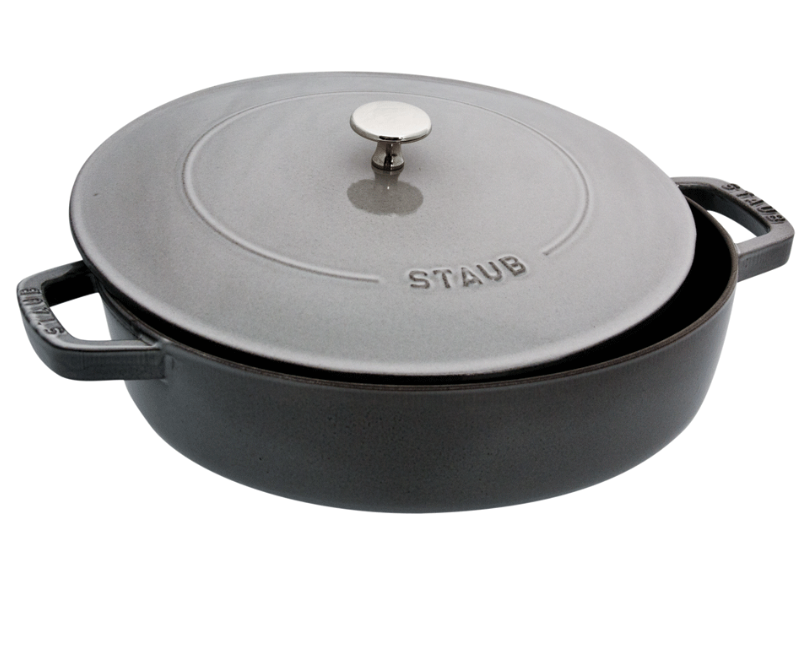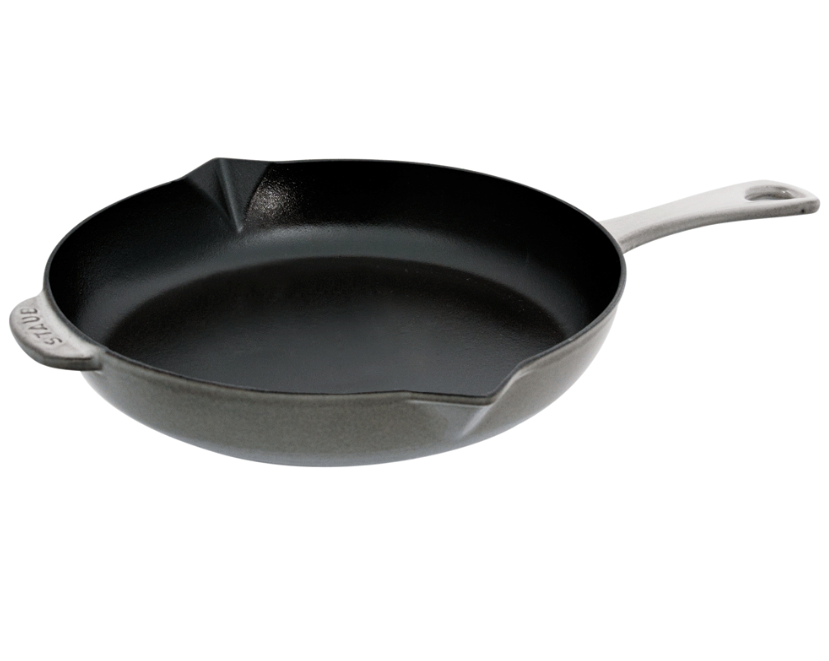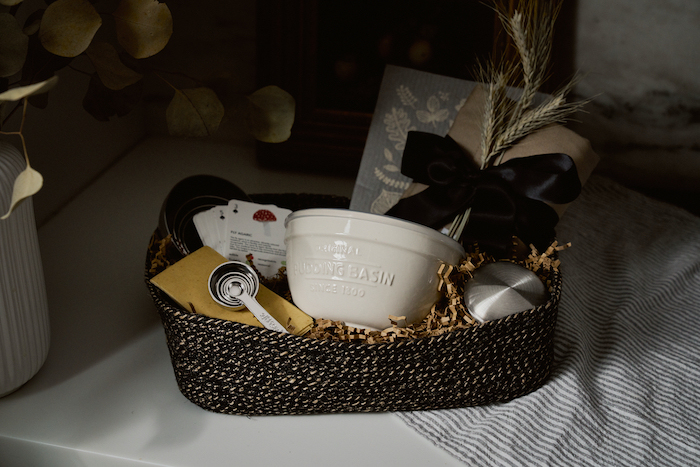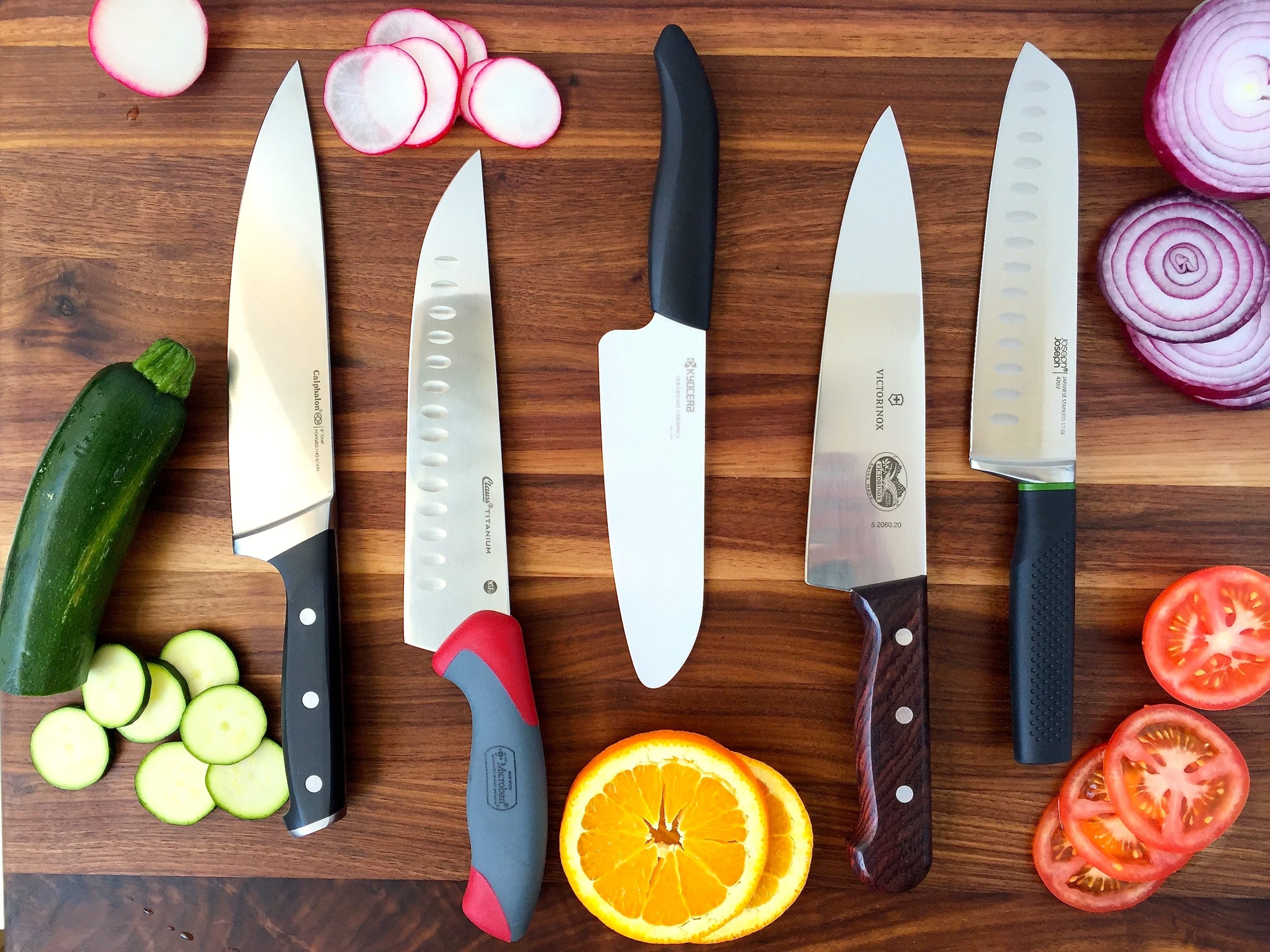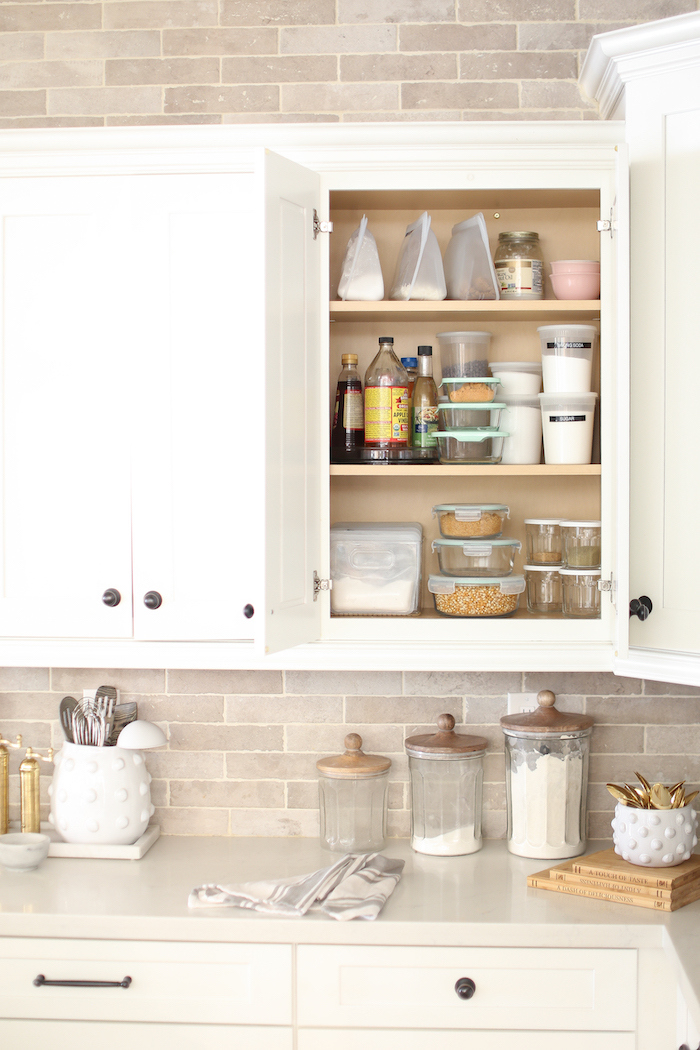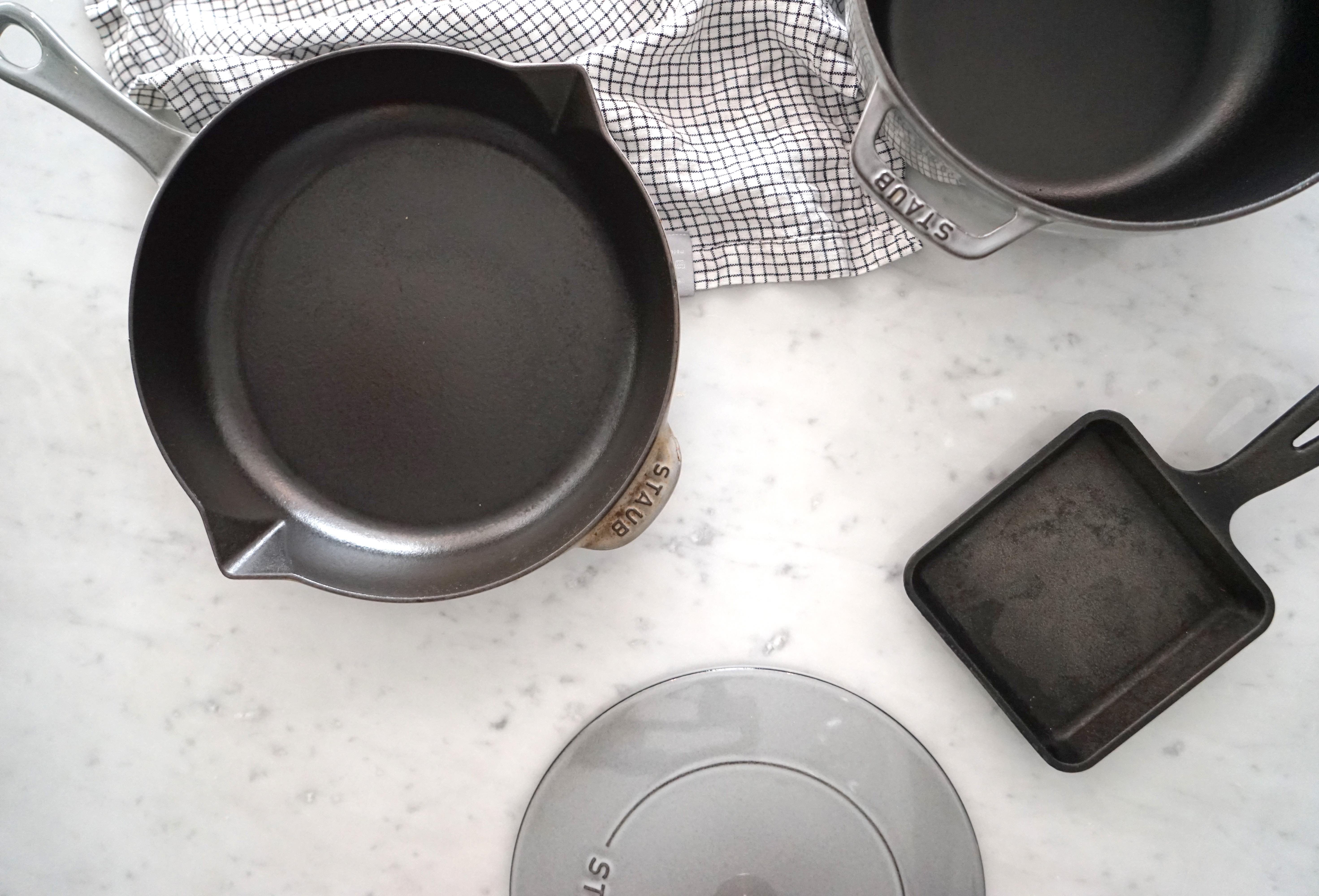
Cooking with cast iron is actually kind of magical. With proper care, cast iron cookware can last forever, are naturally non-stick, and will sear a crispy, caramelized crust on your dinner like no other cookware I know. In spite of all this, cast iron gets a bad rap for being difficult to use and tough to clean— I was among those who were a little gun shy about cooking with cast iron earlier in my cooking career, thanks to a lot of myths that I’ve since busted.
Here are some helpful tips when using cast iron cookware:
- Seasoning a Cast Iron Pan
- Tips for Cooking with Cast Iron
- How to Clean Your Cast Iron
- Maintaining Your Cast Iron
- Restoring Cast Iron
There are so many benefits to cooking with cast iron, and unlike many other kitchen pots and pans, cast iron pans actually get better with age. They are incredibly versatile and can be used in so many different ways, especially when it comes to one-pot or one-pan recipes that need to transfer from stove top to oven. This makes the cooking process and cleanup process so much easier and faster. If cast iron has intimidated you in the past, it’s time to conquer your fears— with a bit of know-how you’ll be cooking with cast iron like a pro in no time.
How to Season Cast Iron
Seasoning is the magical process by which you create a non-stick, smooth surface on your cast iron cookware. You’ll do this once every couple of months if you use your pan often, and maybe once a year if you use your pan infrequently. While seasoning requires a few steps, it couldn’t be simpler:
- Start by giving your pan a good, thorough cleaning to start – even if it’s a new pan. If there is rust or stuck on food, use a piece of steel wool and some mild dish soap. Don’t forget to scrub the sides, the handle, and the bottom.
- Make sure your pan is clean and completely dry. You can use a dish towel and dry the pan thoroughly. Sometimes putting your cast iron on the stove and heating it until all of the water evaporates is the best way to ensure it’s completely dry.
- Rub some flax or canola oil into all areas of the pan— the top, the bottom, and the handle (if your pan has an enameled bottom or handle, you can skip those parts).
- Once your pan is generously coated, take a clean cloth and wipe off the excess oil. What’s needed has already been absorbed into the pores of the skillet, and the rest will just make for a sticky surface that food will stick to.
- Heat your oven to the highest temperature it can go, then pop the pan in upside down for about an hour. *Pro Tip: Place a piece of tin foil on the rack below to catch any oil drips.
- Turn off the oven and let it sit inside the oven until it’s completely cool.
That’s it. Your cast iron surface is good to go for more delicious meals.
*Pro tip: Sometimes when you are heating your oiled cast iron in the oven, the oil will smoke. This is completely normal as you are heating the oil past its smoking point. Make sure to turn your vent on to help filter out the smoke from your oven.
Cooking with a Cast Iron Skillet
Whenever you’re cooking in your cast iron skillet on a stovetop, make sure you preheat the cast iron for 5-10 minutes on a low to medium heat before adding food to the pan. Cast iron pans don’t typically heat evenly, but they do keep the heat really well. Dropping cold food into a cold cast iron skillet won’t give you the best results. You will know your pan is hot enough when you hover your hand over the pan and can feel the heat.
Another good tip to follow when cooking with cast iron is once you drop your food in, leave it alone. Moving it prematurely will cause it to stick— you’ll know when your dinner is ready to toss or flip when it comes away from the bottom of the pan easily.
*Pro tip: Always have an oven mitt on hand or purchase a cast iron handle cover. Cast iron handles are not heat proof, and will burn you if you try to grab it without a mitt or cover (I’ve burned myself before forgetting that the handle was hot).
The best utensils to use with cast iron
Cast iron is an incredibly hard and durable material. Don’t be afraid to use metal or stainless steel spatulas. Wood spatulas are also good to use too, however we wouldn’t recommend plastic. Since cast iron pans get super hot, plastic spatulas could melt, causing problems with your pan and food in the long run.
Cooking vegetables in a cast iron skillet
If you’re a fan of perfectly-crisp vegetables, you won’t want to reserve your skillet for meat alone. You can whip up crispy cauliflower for a side dish, pan roasted cabbage slaw to top your sandwiches or burgers, charred peppers for tacos, or even vegetarian chili with mustard roasted red potatoes!
Cooking eggs in a cast iron skillet
If your skillet is seasoned really well, there is really no end to what you can cook in that bad boy. You can cook up the most delicious cheese, veggie and ham frittata, or bake off a delicious smoked cheddar and jalapeno cornbread. What is great about cooking with cast iron is you can take it from stove top to oven without having to transfer the food to an oven safe dish.
Cooking meats in a cast iron skillet
While you can pretty much cook anything and everything in a cast iron skillet, there’s nothing better than a steak with a crispy seared crust that comes from nothing but a bit of oil and a cast iron skillet. They’re honestly made for each other. Or you could cook an entire roasted chicken in a cast iron skillet. Cast iron is incredibly versatile, making the cooking and recipe possibilities endless.
*Pro Tip: Even though you seasoned the pan, you’ll still want to cook with a bit of fat with a high smoke point to ensure the crispiest, best result.
Cleaning a Cast Iron Pan
Cleaning a cast iron skillet is simple and takes very few tools. If you have access to hot water and a sponge, you have what you need to give your skillet a good cleaning. Try adding coarse salt into the mix for an extra-deep clean when you’re facing stubborn food residue. Be sure to clean all sides of the pan, including the handle and the bottom.
*Pro Tip: Cast iron will rust if you don’t fully dry it after washing, so make sure it’s dry and you’ll avoid any rust problems. You can use a dish towel to dry it off, or place on the stovetop and heat until the water has evaporated. You could also hang your cast iron to avoid water or moisture getting trapped on it.
How To Maintain Cast Iron Skillets
There are a few rules you will want to abide when cooking with a cast iron skillet.
- Cooking acidic dishes in cast iron can mess with your seasoning. Tomatoes, wines, and vinegars can cause your cast iron pan to lose it’s seasoning if these types of foods are cooked often. This doesn’t mean you can’t cook acidic foods in a cast iron pan. It just means you may need to reseason it before cooking other dishes.
- Do not expose your cast iron pan to extreme temperature changes. This includes immersing it in cold water straight from the stove. You could risk cracking the pan.
- Flaky fish or meats with a delicate skin have trouble releasing from the pan. This causes your fish or meat to fall apart when flipping.
- Cast iron pans and skillets take on the flavor of what you cook in it. This is fantastic when cooking steaks, meats, veggies, and other recipes that taste better with other flavors mixed in. What might not be the best match is if you cook fish in your pan, and then cook a brownie in it a few days later. To solve this, you may want to have a couple cast iron pans or skillets. One for desserts and sweet recipes, and another for meats, steaks, sauces and veggies.
How to Restore a Rusted Cast Iron Skillet
If you’ve been handed down your grandma’s cast iron, and it’s gotten a bit rusty, there’s no need to toss it. Most can be revived with a bit of elbow grease. A combination of vinegar, baking soda and salt will take it all away. Steel wool is okay to use at this stage, but you won’t want to use it once your pan is properly seasoned. Once you have the rust removed, you can scrub the skillet clean with soap and hot water, then re-season it like you would a new skillet. You may have to repeat this process more than once to get the results you’re looking for. Make sure you dry it thoroughly before starting the seasoning process
If you follow these simple rules, your cast iron skillet will last you a lifetime. If you take care of it, it could last long enough to be used in your sons’ or daughters’ kitchens as well.
Looking For Some Cast Iron Skillet Recipes?
Here are some other delicious recipes that incorporate cast iron skillet cooking:
- Try this delicious Skillet Salmon.
- 3 Delicious Skillet Desserts that you will want to make for your friends and family.
- The Best Roast Chicken recipe that is easy to make.


